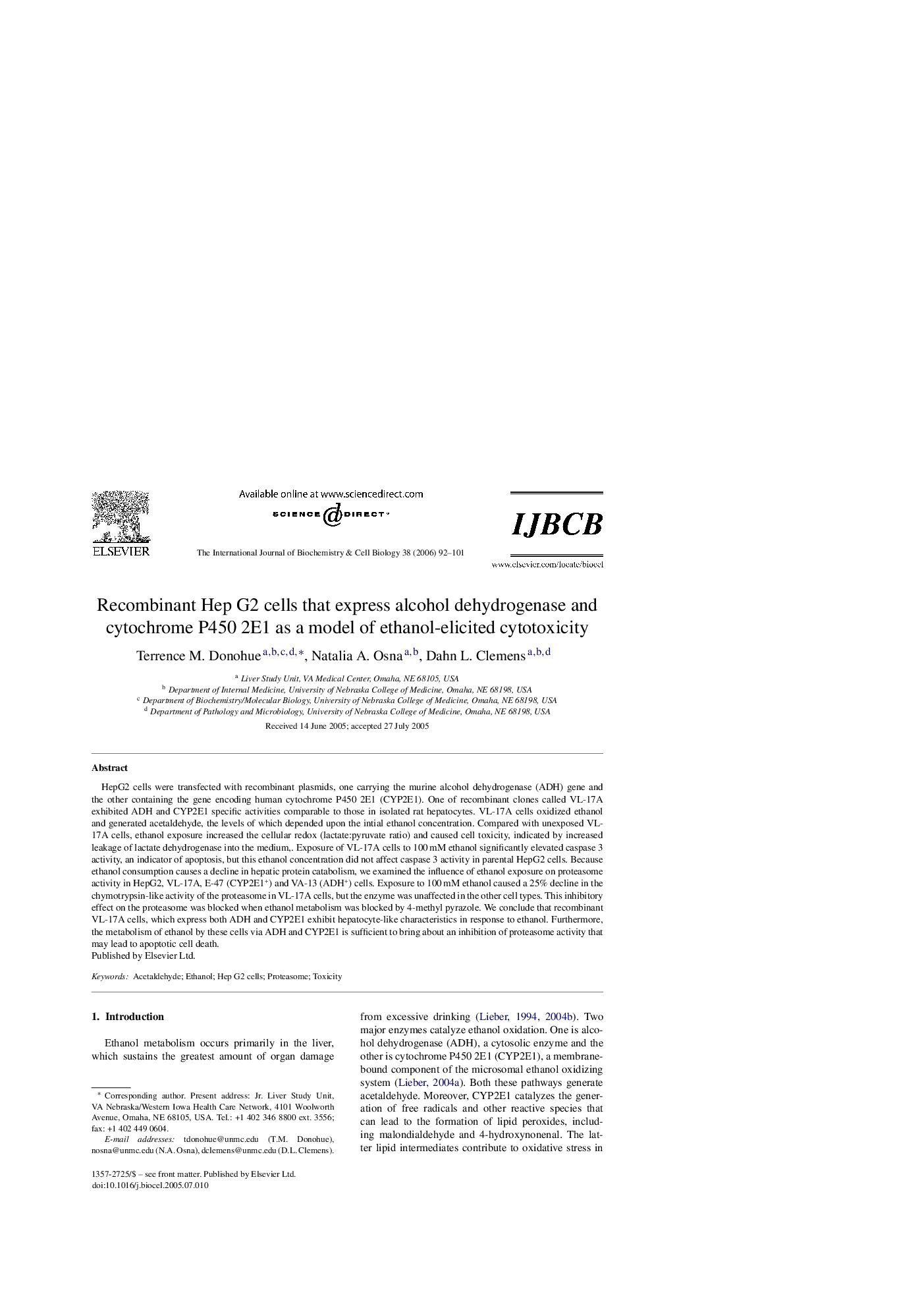| Article ID | Journal | Published Year | Pages | File Type |
|---|---|---|---|---|
| 1984827 | The International Journal of Biochemistry & Cell Biology | 2006 | 10 Pages |
HepG2 cells were transfected with recombinant plasmids, one carrying the murine alcohol dehydrogenase (ADH) gene and the other containing the gene encoding human cytochrome P450 2E1 (CYP2E1). One of recombinant clones called VL-17A exhibited ADH and CYP2E1 specific activities comparable to those in isolated rat hepatocytes. VL-17A cells oxidized ethanol and generated acetaldehyde, the levels of which depended upon the intial ethanol concentration. Compared with unexposed VL-17A cells, ethanol exposure increased the cellular redox (lactate:pyruvate ratio) and caused cell toxicity, indicated by increased leakage of lactate dehydrogenase into the medium,. Exposure of VL-17A cells to 100 mM ethanol significantly elevated caspase 3 activity, an indicator of apoptosis, but this ethanol concentration did not affect caspase 3 activity in parental HepG2 cells. Because ethanol consumption causes a decline in hepatic protein catabolism, we examined the influence of ethanol exposure on proteasome activity in HepG2, VL-17A, E-47 (CYP2E1+) and VA-13 (ADH+) cells. Exposure to 100 mM ethanol caused a 25% decline in the chymotrypsin-like activity of the proteasome in VL-17A cells, but the enzyme was unaffected in the other cell types. This inhibitory effect on the proteasome was blocked when ethanol metabolism was blocked by 4-methyl pyrazole. We conclude that recombinant VL-17A cells, which express both ADH and CYP2E1 exhibit hepatocyte-like characteristics in response to ethanol. Furthermore, the metabolism of ethanol by these cells via ADH and CYP2E1 is sufficient to bring about an inhibition of proteasome activity that may lead to apoptotic cell death.
